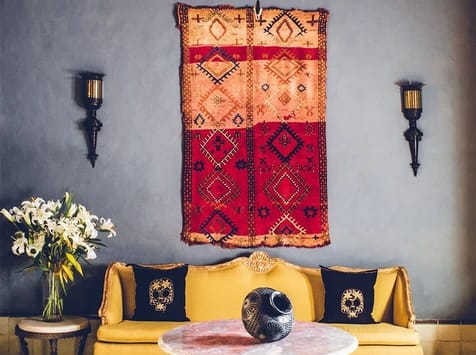Moroccan carpets, also known as Moroccan rugs, are a type of handmade woolen rug or carpet that are traditionally made by the Berber tribes of Morocco. These carpets are known for their unique designs and patterns, which often feature bold geometric shapes and vibrant colors.
These carpets are typically made using a weaving technique known as the “Berber knot”, which is a type of hand-knotting that creates a dense and durable pile. The wool used to make these carpets is typically sourced from local sheep and is known for its softness and durability.
Moroccan carpets have been produced in the country for centuries, and have long been prized for their beauty and quality. Today, Moroccan carpets are popular all around the world and are considered to be one of the most iconic examples of traditional Berber craftsmanship. They are often used to add warmth, texture, and color to a room, and can be found in a wide variety of sizes, styles, and colors to suit any taste or decor.
General introduction about Moroccan carpets and rugs
Carpets and rugs have long been an integral part of human existence not only in Morocco but the whole world. The use of wool extends back thousands of years and is thought to have originated in China and Persia. The earliest evidence of the knotted carpet goes back to the fifth century BCE in Siberia. The advent of this method on a global scale correlates with the production of wintertime floor decorations and blankets.
This floor covering made of sheep’s wool would become a common and usual item throughout time, but it would retain the polished and proud cultural distinctions of its designers. So, in Morocco, both in the imperial towns and the Berber territories, the carpet has become an art form that stands alongside the great weaving traditions of Europe, Persia, Asia, and the East.


